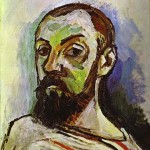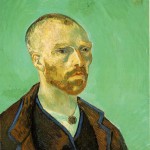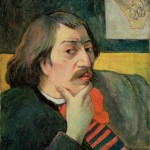International Exhibition
March 24-April 16, 1913
Chicago, Illinois
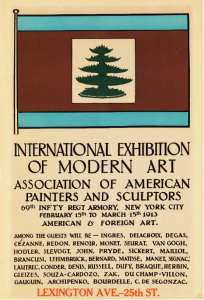 With the International Exhibition of Modern Art over one hundred years behind us, now is the perfect time to recollect the controversy and chaos that surrounded the modernist artworks.
With the International Exhibition of Modern Art over one hundred years behind us, now is the perfect time to recollect the controversy and chaos that surrounded the modernist artworks. 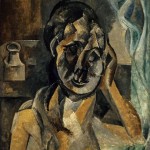 The rejection of Chicago news reporters and faculty of the Art Institute of Chicago resulted in a general apprehension by American art museums of modern art, restricting most of the country from viewing the
The rejection of Chicago news reporters and faculty of the Art Institute of Chicago resulted in a general apprehension by American art museums of modern art, restricting most of the country from viewing the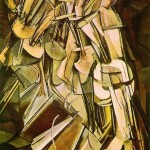 exciting progression of art making for at least a decade. Modern artworks, such as Pablo Picasso’s Woman with Mustard Pot (1910) and Marcel Duchamp’s Nude Descending a Staircase (1912), have greatly influenced artists and graphic designers for over one hundred years; why did these artists receive such strong opposition at the time of the International Exhibition in Chicago? It is important to consider the multiple sides of this exhibition and from which it spawned.
exciting progression of art making for at least a decade. Modern artworks, such as Pablo Picasso’s Woman with Mustard Pot (1910) and Marcel Duchamp’s Nude Descending a Staircase (1912), have greatly influenced artists and graphic designers for over one hundred years; why did these artists receive such strong opposition at the time of the International Exhibition in Chicago? It is important to consider the multiple sides of this exhibition and from which it spawned.
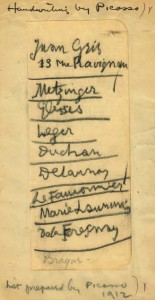 The Association of American Painters and Sculptors came up with the idea to host an exhibition of international artists in an American city. Surprisingly, the bulk of the show was made up of the most eccentric European Modernists. This fact alone could have been the reason for the exhibit beginning its tour in New York. Originally, the Art Institute of Chicago had been asked to host the exhibit, but their proposal was denied. The Institute, clinging to the conventions of academic art, taught their students the importance of preserving “Truth” and “Beauty,” a far cry from the standards of the Modernists.
The Association of American Painters and Sculptors came up with the idea to host an exhibition of international artists in an American city. Surprisingly, the bulk of the show was made up of the most eccentric European Modernists. This fact alone could have been the reason for the exhibit beginning its tour in New York. Originally, the Art Institute of Chicago had been asked to host the exhibit, but their proposal was denied. The Institute, clinging to the conventions of academic art, taught their students the importance of preserving “Truth” and “Beauty,” a far cry from the standards of the Modernists.
Soon after the Armory Show opened in New York, trustees and patrons of the Art Institute of Chicago schemed about bringing the artworks to Chicago. Arthur Aldis, a governing member of the Institute, was one of them. Aldis had spent time in Europe and was accustomed to modern European artworks. Due to his high esteem towards modern art, Aldis knew the show must come to Chicago. Without consulting his fellow trustees, and most importantly William M. R. French, the Institute’s director, Aldis closed the deal while living in Paris, persuading French much later.
Hostility grew with reports from Chicago journalists covering the show in New York. Dramatic headlines and false facts caused the exhibit to appear grotesque in the eyes of Chicago citizens whom were anticipating its arrival. Harriet Monroe, the art critic for the Chicago Daily Tribune, came up with headlines like “Art Show Open to Freaks” and “American Exhibition in New York Teems with the Bizarre.” Coverage such as this created an atmosphere of unease prior to the opening at the Institute in Chicago.
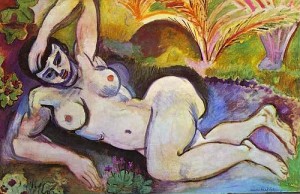 On March 24, opening day of the exhibit at the Art Institute of Chicago, attendance was in the thousands despite bad reviews of the New York show. Perhaps to attract attention and gain readers, reporters continued to give false information on specific pieces, frequently adding a cynical spin. Undeniably, reporters solidified a negative attitude towards modern art. In addition to the opinions of reporters, the people of Chicago found modern artworks difficult to grasp and questioned their morality.
On March 24, opening day of the exhibit at the Art Institute of Chicago, attendance was in the thousands despite bad reviews of the New York show. Perhaps to attract attention and gain readers, reporters continued to give false information on specific pieces, frequently adding a cynical spin. Undeniably, reporters solidified a negative attitude towards modern art. In addition to the opinions of reporters, the people of Chicago found modern artworks difficult to grasp and questioned their morality.
Grade school teachers and Institute professors actively dissuaded their students from viewing 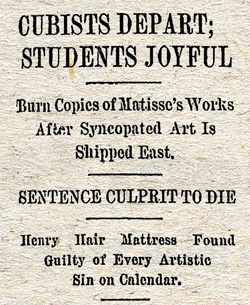 the exhibit based on beliefs of morality; a high school teacher went as far as to petition the Board of Education to ban school children from visiting. By closing day, April 16, some students had adopted the contemptuous attitude that had been fed to them in newspapers and class rooms during the span of the show. Two hundred Art Institute students were so offended by the artworks that on closing day were screaming curses while others even acted out in violence.
the exhibit based on beliefs of morality; a high school teacher went as far as to petition the Board of Education to ban school children from visiting. By closing day, April 16, some students had adopted the contemptuous attitude that had been fed to them in newspapers and class rooms during the span of the show. Two hundred Art Institute students were so offended by the artworks that on closing day were screaming curses while others even acted out in violence.
Today when we view artworks from the International Exhibition of Modern Art we can understand how the foundations of morality and realism in American art were disrupted, and in which ways artists have since deviated from traditional art making. Works by Cezanne, Gauguin, Van Gogh, Duchamp, Picasso, Manet and many others have given way to new art forms and styles, forever altering the way Americans think and see art.
Sources
Martinez, Andrew. “A Mixed Reception for Modernism: The 1913 Armory Show at the Art Institute of Chicago.” Art Institute of Chicago Museum Studies, Vol. 19, No. 1, One Hundred Years at the Art Institute: A Centennial Celebration (1993), pp. 30-57+102-105.


